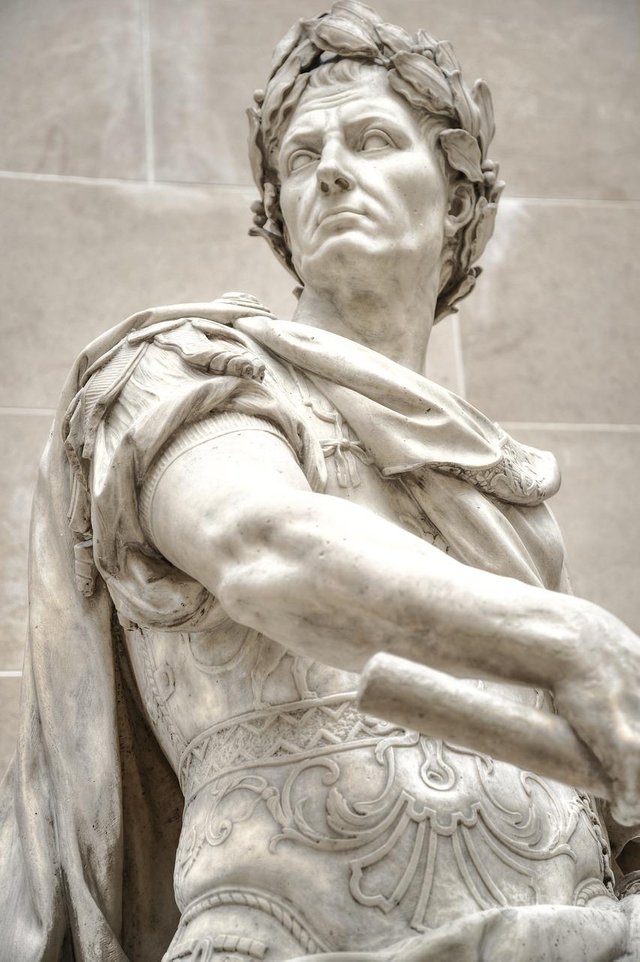Hello Steemians,
I hope all are you doing well. Today I'll share the history of calendar. Let begin with another learning blog.
Christmas is observed by Orthodox Christians on January 7. Their "ancient new year" is on January 14th, a week later. It's all because of Julius Caesar...
Every two years, the Romans forgot to add an extra month to account for the gap between their lunar calendar and the natural solar year. In order to bridge the vast difference that had accumulated over the past seven centuries, some historians implausibly claim that the year 46 BC should contain 445 days (some historians say: 443 days). The "Year of Confusion" was properly named.
Julius Caesar fastened the New Year on January 1 (the day the Senate normally assembled) and added a day or two to a few months to "refresh" the calendar.
As a result, the Julian Calendar was formed, a modernised version of the Aristarchus calendar from 239 BC. The month of Quintilis was renamed Julius (July) in his honour after his assassination.
The natural solar year (the time it takes the earth to complete one orbit around the sun) is 365 days and 6 hours according to the Julian calendar.
The extra six hours were gathered every fourth year and added as an extra day to the year, resulting in a leap year with 366 days.
However, the underlying estimate on the calendar was incorrect by 11 minutes and 14 seconds. It was a year that lasted longer than the usual solar year. The extra minutes added up to an entire day. By 325 AD, the Julian Calendar's Spring Equinox has moved to March 21st, rather than March 25th.
In 325, the First Ecumenical Council gathered in Nicea and decided that Pascha should be celebrated on the first Sunday following the first full moon following the Spring Equinox on March 21st. It cemented the Julian calendar's anomaly, in other words.
As a result, by 1582, the Spring Equinox was on March 11th. Popes Paul III and Pius V took half-hearted measures to restore the crucial relationship between the calendar and the seasons, but they were unsuccessful.
Pope Gregory XIII, in his tenth year in office, determined to eliminate three leap years every 400 years by requiring any year ending in 00 to be equally divisible by 400 in order to have a 29-day February.
The Julian calendar would be brought closer to the normal length of the solar year as a result of this, albeit there would still be a 26-second inaccuracy per year.
In October 1582, 10 days were removed from the civil calendar to align the Julian calendar with the Gregorian calendar and move the Spring Equinox back to March 21. The following day, Thursday, October 4th, was followed by Friday, October 15th. People rioted in the streets across Europe, believing they had been cheated out of ten days.
This, however, was only a handy fabrication. The Spring Equinox in the Gregorian calendar was, indeed, celebrated on March 21 in perpetuity. But, according to the Julian calendar, in the 17th century it arrived on March 11th, in the 18th century on March 10th, in the 19th century on March 9th, and in the 20th century on March 8th – 13 days earlier than even the erroneous date adopted by the
In Protestant countries, the Gregorian calendar was a source of contention. It was only in 1752 that the United Kingdom and its colonies adopted it. They had to remove 11 days from the civil calendar and relocate the formal start of the year from March 25 to January 1. For centuries, dates marked with an OS ("Old Style") were calculated using the Julian calendar, whereas those marked with an NS ("New Style") were calculated using the Gregorian calendar. Sweden in 1753, Japan in 1873, Egypt in 1875, Eastern Europe between 1912 and 1919, and Turkey in 1927 all accepted the Gregorian Calendar. The (bourgeois) revolutionaries in Russia demanded that thirteen days be deleted from the calendar, with the day following January 31, 1918 being February 14, 1918.
The Christian Orthodox continued to use the Julian calendar during this time. The Conference of Orthodox Churches in Constantinople lowered the number of leap years every 900 years in 1923, resulting in a 2.2-second difference between the calendar and the natural solar year.
The spring equinox will regress by one day every 40,000 years, according to this calendar.
They, too, had to move the spring equinox back to March 21st by 13 days. As a result, there is a gap between December 25 and January 7 on the Gregorian calendar (revised Julian-Orthodox calendar).
I hope you guys like it.
Leave your suggestions in comment box.

